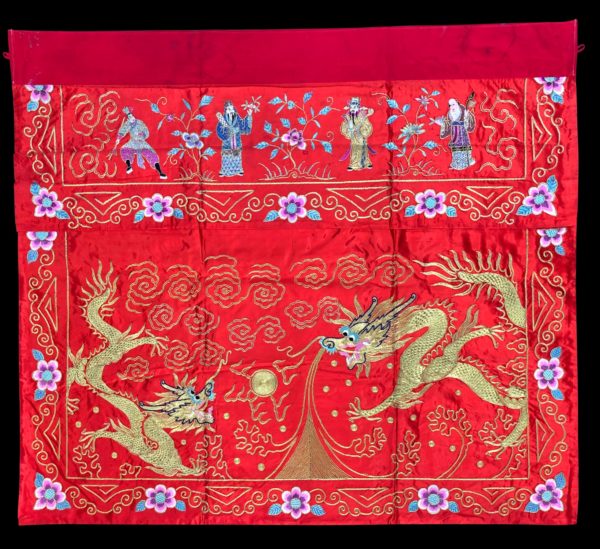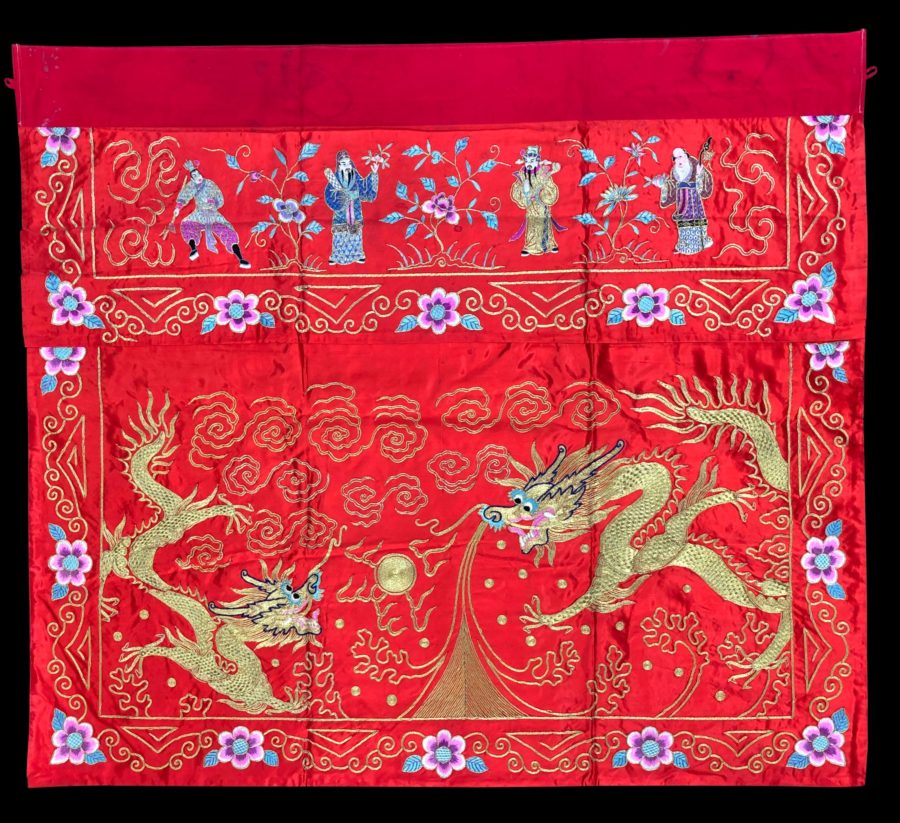This lavish altar cloth or tok wi (literally, ‘altar skirt’) is of red silk (with a red linen backing) that has been elaborately and meticulously embroidered and couched with silk thread and gold-wrapped and other metallic threads.
Auspicious Chinese motifs are illustrated. The lower panel includes two dynamically rendered dragons appearing to play (or fight!) over a flaming pearl. The upper panel includes four auspicious deities.
The cloth is in typical form in that there is a lower and an upper panel, with the upper panel being stitched to the top and falling down loosely over about a quarter or a third of the lower panel, beneath which the textile is plain. A red cotton textile loop is at each upper end to allow the cloth to be tied to the altar. Altars in Straits and Peranakan Chinese homes typically comprised a long, high altar and before it would sit a front alter to which this cloth would be attached. It, like the front altar, are square.
Such cloths were attached to the front of altar tables in the family home during significant occasions. The red background and the colourful motifs suggests that this altar cloth was used for festive occasions.
These were used by the Straits Chinese of what is now Malaysia and Singapore as well as the peranakan (localised) Chinese of Sumatra and Java. They were either commissioned locally or commissioned from China, and were made in Chinese specifically for the Southeast Asian market.
The cloth is in perfect condition, with only the top edging (which typically might of been folded onto the top of the table) having some light water staining.
NOTE: to see the detail on this cloth keep clicking on the image below until a high resolution version appears.
References
Cheah, H.F, Nyonya Needlework: Embroidery and Beadwork in the Peranakan World, Asian Civilisations Museum, 2017.
Ee, R., et al, Peranakan Museum A-Z Guide, Asian Civilisations Museum, 2008.
Knapp, R.G., Chinese Houses of Southeast Asia: The Eclectic Architecture of Sojourners and Settlers, Tuttle, 2010.
Lee, P. et al, Auspicious Designs: Batik for Peranakan Altars, Asian Civilisations Museum, 2015.



